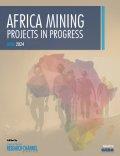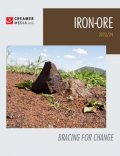|
SELECT a_id, a_id_word, a_headline, a_publish_date, a_abstract, a_author, a_has_video, a_has_audio FROM su_cat_sg_mappings, re_categories , re_category_sections_assoc , pr_sections , pr_article_section_assoc , pr_articles_search, pr_article_media_assoc WHERE csg_sg_id = 1 AND csg_cat_id = cat_id AND a_status = 1
AND a_process_status = 4 AND a_expiry_date >= 1719820800
AND cat_id = scat_cat_id AND scat_s_id = s_id AND s_id = ase_s_id AND ase_a_id = a_id
AND cat_re_id = 42 AND ama_a_id = a_id AND ama_mt_id = 2 AND ama_p_id = ase_p_id AND s_id NOT IN (14903,14910,14911,14906,14904,14912,14909,14908,14907,14905) AND a_publish_date <= 1719820800 AND ase_s_id IN (14576,15076,14885,15075,14270,14271,14272,14886,14274,14273,14888,15674,14887) GROUP BY a_id ORDER BY a_publish_date DESC LIMIT 0, 100
|
 |
Steel 2021: A fragile recovery
 Published: 26 Jul 21
The Covid-19 pandemic has pushed the world economy into its worst downturn in decades, resulting in the steepest decline in steel demand since the global financial crisis of 2008/9. The national lockdowns, falling demand and supply chain disruptions owing to the pandemic quickly spread to key steel-consuming sectors, which had significant declines in output. Of the main steel-using industries, automotive and mechanical machinery have been affected the most; however, many other sectors that are important for steel demand, such as energy, have also been severely affected.
Nonetheless, the World Steel Association’s Short Range Outlook for 2021 and 2022 indicates that the post-lockdown recovery in steel demand has been stronger than was earlier expected, with steel demand expected to recover to 1.87-billion tonnes in 2021, an increase of 5.80%.
Structural changes are expected to accompany the recovery process, with a shift in the demand structure of steel-using sectors, including automotive, owing to electric vehicle transitions and new urban mobility patterns; and in construction, with new patterns of urbanisation, changes in urban planning and building designs, as well as investment in the energy sector.
Overall recovery, however, remains fragile, owing to the waves of infections, continued physical distancing measures, elevated unemployment and weak confidence, as well as increasing concern about the timing of a demand recovery.
|
|
 |
Projects in Progress 2021 (First Edition)
Published: 30 Apr 21
While a successful Covid-19 vaccine roll-out is considered as the most important driver of the recovery from the pandemic, infrastructure investment remains as urgent as ever and is increasingly viewed as key to creating forward economic momentum.
Governments worldwide are preparing to invest trillions of dollars in new economic and social infrastructure to address backlogs and provide the basis for future economic resiliency, with some even seeing it as an opportunity to ignite this century’s own ‘roaring 20s’.
Special priority is being given to so-called green infrastructure to help countries mitigate and adapt to climate change, as well as digital infrastructure, which is seen as a key platform for generating and sustaining higher levels of future-proofed growth.
For South Africa, the social and economic infrastructure deficits are so large that it is not going to be possible for government to deliver these on its own. Fiscal stresses are not the only constraint, with all three spheres of government facing serious capacity deficiencies.
It is time for South Africa to adopt a stance identical to the one articulated by US President Joe Biden in March 2021, when he unveiled his proposed $2-trillion American Jobs Plan: “We can’t delay. We can’t delay another minute. It’s long past due.”
|
Projects in Progress 2021 (First Edition)
|
|
|
 Buy Report
Just Energy Transition 2024: Investing in the future
Buy Report
Buy Report
Just Energy Transition 2024: Investing in the future
Buy Report
 Buy Report
Hydrogen 2024: Implementation crucial going forward
Buy Report
Buy Report
Hydrogen 2024: Implementation crucial going forward
Buy Report
 Buy Report
Roads, Rail & Ports 2024: Inefficiencies reach new lows
Buy Report
Buy Report
Roads, Rail & Ports 2024: Inefficiencies reach new lows
Buy Report
 Buy Report
Africa Mining Projects in Progress 2024
Buy Report
Buy Report
Africa Mining Projects in Progress 2024
Buy Report
 Buy Report
Iron-Ore 2023/24: Bracing for change
Buy Report
Buy Report
Iron-Ore 2023/24: Bracing for change
Buy Report
 Buy Report
Platinum Group Metals 2023: Crucial Element in the Energy Transition
Buy Report
Buy Report
Platinum Group Metals 2023: Crucial Element in the Energy Transition
Buy Report
 Hendrina Wind Farm, South Africa
Published: 28 Jun 24
Hendrina Wind Farm, South Africa
Published: 28 Jun 24
 Maydon Wharf precinct liquid bulk facility, South Africa
Published: 28 Jun 24
Maydon Wharf precinct liquid bulk facility, South Africa
Published: 28 Jun 24
 Kaminho deep-water project, Angola
Published: 28 Jun 24
Kaminho deep-water project, Angola
Published: 28 Jun 24
 The shareholders of Argonaut Gold have approved a special resolution for a takeover by fellow Canadian miner Alamos Gold.
The arrangement...
Progress made in reducing water lettuce invasion in Vaal
Published: 01 Jul 24
The volume of the water lettuce and water hyacinth across the Vaal River Barrage Reservoir has reduced markedly over the past few months as removal...
Argentina is about to unleash a wave of lithium in a global glut
Published: 01 Jul 24
For all the money that’s poured into Argentina’s giant lithium deposits, the country has seen just one new mine come on stream in almost a decade....
The shareholders of Argonaut Gold have approved a special resolution for a takeover by fellow Canadian miner Alamos Gold.
The arrangement...
Progress made in reducing water lettuce invasion in Vaal
Published: 01 Jul 24
The volume of the water lettuce and water hyacinth across the Vaal River Barrage Reservoir has reduced markedly over the past few months as removal...
Argentina is about to unleash a wave of lithium in a global glut
Published: 01 Jul 24
For all the money that’s poured into Argentina’s giant lithium deposits, the country has seen just one new mine come on stream in almost a decade....
 The shareholders of Argonaut Gold have approved a special resolution for a takeover by fellow Canadian miner Alamos Gold.
The arrangement...
Progress made in reducing water lettuce invasion in Vaal
Published: 01 Jul 24
The volume of the water lettuce and water hyacinth across the Vaal River Barrage Reservoir has reduced markedly over the past few months as removal...
Argentina is about to unleash a wave of lithium in a global glut
Published: 01 Jul 24
For all the money that’s poured into Argentina’s giant lithium deposits, the country has seen just one new mine come on stream in almost a decade....
The shareholders of Argonaut Gold have approved a special resolution for a takeover by fellow Canadian miner Alamos Gold.
The arrangement...
Progress made in reducing water lettuce invasion in Vaal
Published: 01 Jul 24
The volume of the water lettuce and water hyacinth across the Vaal River Barrage Reservoir has reduced markedly over the past few months as removal...
Argentina is about to unleash a wave of lithium in a global glut
Published: 01 Jul 24
For all the money that’s poured into Argentina’s giant lithium deposits, the country has seen just one new mine come on stream in almost a decade....










